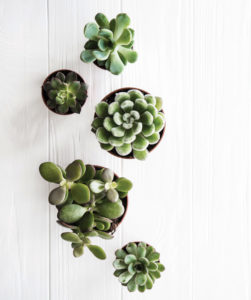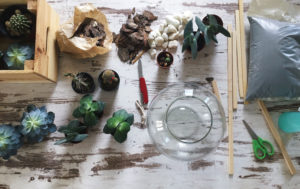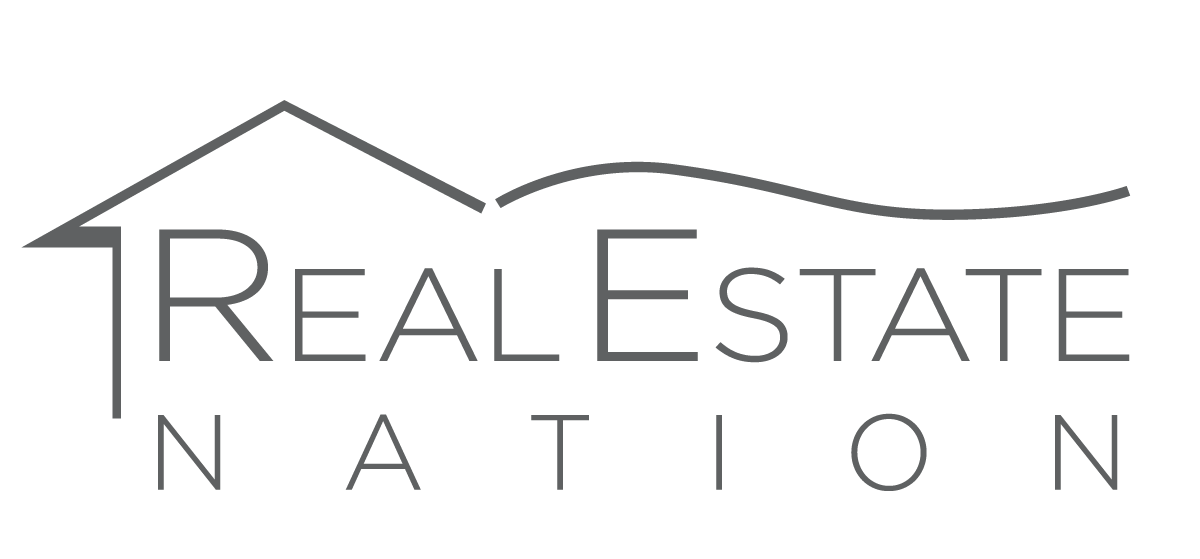Indoor Plants Add an Organic Touch to Your Surroundings
Houseplants are back in a big way (especially low-maintenance varieties), and there are plenty of do-it-yourself projects to make your natural  accents stand out from the crowd. Take a cue from Kelly Green, owner of Southern Green (southerngreen.org), who offers unique plant species and containers to accompany them. You can find her work as an art consignor at Tootie and Tallulah’s Annex—a gift, art, and home consignment shop in Berkley, Michigan, owned by Jeri Brand.
accents stand out from the crowd. Take a cue from Kelly Green, owner of Southern Green (southerngreen.org), who offers unique plant species and containers to accompany them. You can find her work as an art consignor at Tootie and Tallulah’s Annex—a gift, art, and home consignment shop in Berkley, Michigan, owned by Jeri Brand.
As Green explains, when her air plant orbs began selling like hotcakes, a DIY terrarium bar was born. Though generic styles are readily available, Green’s customers wanted something more personalized, which is exactly what they get when making their own arrangements.
While some people like to provide their own containers, others buy one or more at The Annex for their DIY projects. “[Customers] buying a couple of orbs and plants and working on the arrangements themselves is becoming a staple of the store,” says Green, who grew up in Tampa, Florida where indoor plants were the norm. “Even as a kid, I would enjoy plants like bromeliads.”
Plant containers can have as much personality as the plants inside, especially those with a whimsical twist. “I try really hard to find things that are unique, like a ceramic head with a plant on top that looks like hair,” says Green. She also favors quirky vintage vessels like a pink one she found that was shaped like a koi.
Garage and estate sales can be great sources for clever containers. “What was tacky in the ’70s is now very avant-garde,” says Green, who utilizes items like the piece of vintage pottery she paid a couple of dollars for at a thrift store. She also suggests looking at your potential throwaway objects in a different light. “They can be an interesting vessel for a live plant or an air plant,” adds Green. “Succulents are always very popular, and you can put them in something if you’re worried about drainage.”
If you find ceramics you want to use for plants, you can always drill a hole for drainage, she says. Just ask an expert at your local hardware or home improvement store about the right drill bit. You can also add packing peanuts to your potting soil to help with drainage. “Put a bunch at the bottom,” says Green. “Unlike rocks, they sort of hold the moisture when you want it to drain and dry.”
Another easy DIY project is to spruce up your existing plants with simple additions like curly willow sticks or pine cone picks. “Reindeer moss can make a plant look like something the florist just sent,” she says.
For Green, teaching others how to make their own creations comes with the territory. She offers one workshop, for example, about mounting staghorn ferns. “They look like antlers, and they’re fun and hardy. You can mount them on a piece of wood to hang as a really cool object of art,” she says. Another workshop focuses on how to make a dramatic centerpiece with real plants. “Some can actually last forever with plants like sansevieria that need very little water,” says Green. “I love a live centerpiece. It makes a real statement.”
Some customers choose the workshops or the terrarium bar for private parties. “People enjoy the uniqueness of it,” says Green, who believes the increased demand for live plants may be because people are more aware of health benefits like cleaning the air and boosting your mood. Their visual appeal is just a pretty, added perk. Written by Jeanine Matlow. Photography provided by (from top) ©iStockphoto.com/mixetto, ©iStockphoto.com/loonara.
©iStockphoto.com/loonara.
DIY Terrariums
Make your own air plant terrariums with these simple steps from Kelly Green.
Identify your vessel. You may already have a glass container, or you can pick one up at stores such as Hobby Lobby and TJ Maxx.
Purchase an air plant to fit your container. The plants can often be found at boutique shops, garden centers, and through online sources.
Use organic elements to add interest to your creation. Take a walk outside and look for fallen branches, pine cones, pebbles, or sand.
Add a grounding element as a base for your glass vessel.Anything from reindeer moss to river rock can make a pretty presentation. You can even raid your button drawer for something different.
Create your terrarium. Enjoy the process of designing something unique, organic, and long-lasting for your home.

